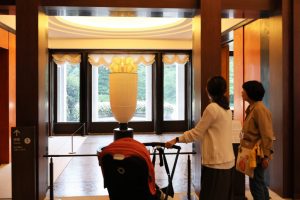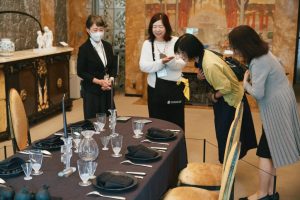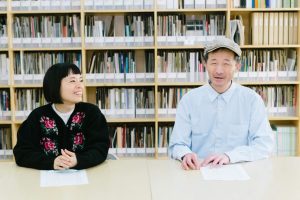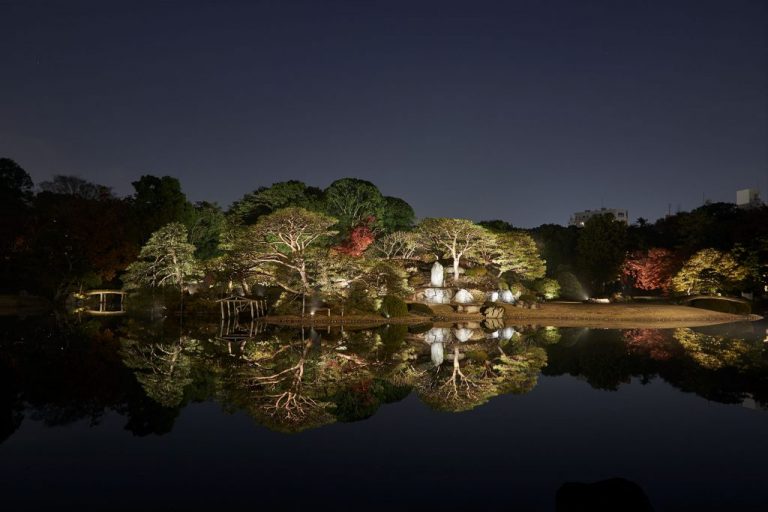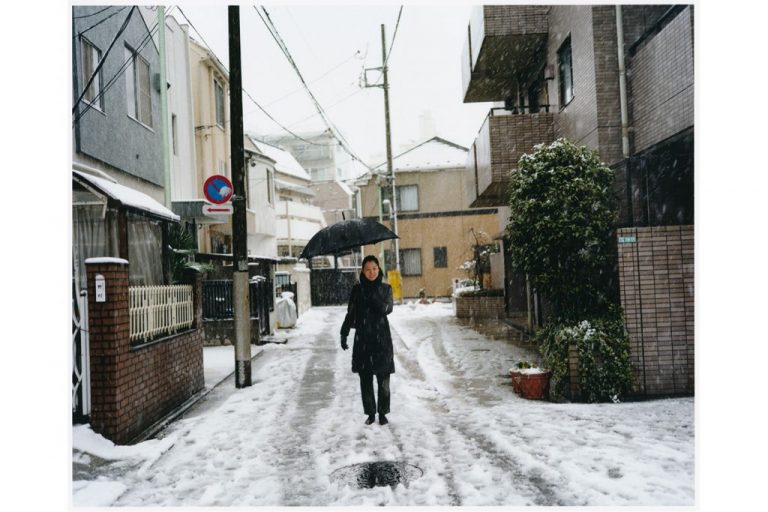In the summer of 2023, “Creative Well-being Tokyo Summer Session 2023” was held at the Tokyo Metropolitan Art Museum, gathering experts and artists involved in accessibility. This event, under the theme “Accessibility and co-creation: Aiming for a symbiotic society through arts and culture,” featured talk sessions, exhibitions, workshops, and performances over the course of about a week. One of the exhibits featured works using laser retinal projection technology. Among the displays in this booth was a photo exhibition titled “Seeing for the first time.” The exhibit featured photos of high school students holding cameras, taken by photographer Masanori Ikeda, as well as everyday landscape photos taken by the high school students themselves.
Advancements in accessibility through technology
SDGs × Art
No.004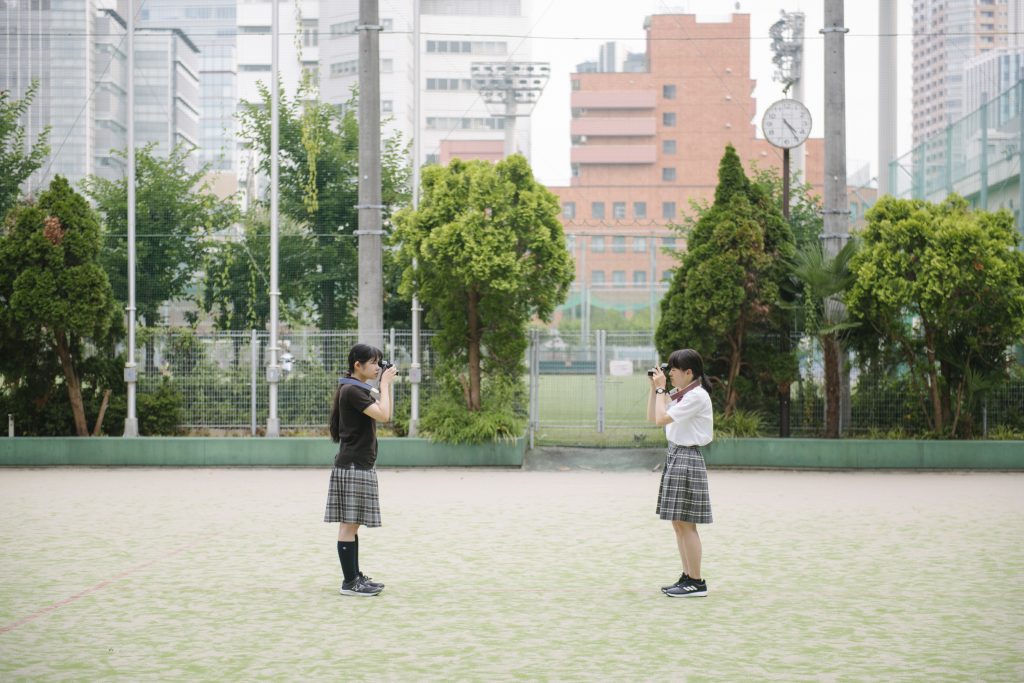
In the “SDGs × Art” series, we introduce art and activities that contribute to the experiment of a sustainable world. This installment focuses on efforts to use “laser retinal projection technology” to make reading and art appreciation easier for people with visual impairments. The tools include the RETISSA ON HAND, a magnifying reader that allows people to read text by looking through it, and the DSC-HX99 RNV kit, a retinal projection camera kit that lets people take photos by looking through the viewfinder. We interviewed Hironori Miyauchi of QD Laser Inc., who is involved in business development, about the background of this development and the future using this technology.
New technology expanding the joy of seeing

The cameras held by the high school students in photo 1 is a digital camera combined with laser retinal projection technology. This technology uses a small projector to directly project images onto the retina, making it easier for people with visual impairments to see objects. At the venue, attendees could also experience the RETISSA ON HAND, a handheld magnifying reader using the same technology as the camera.
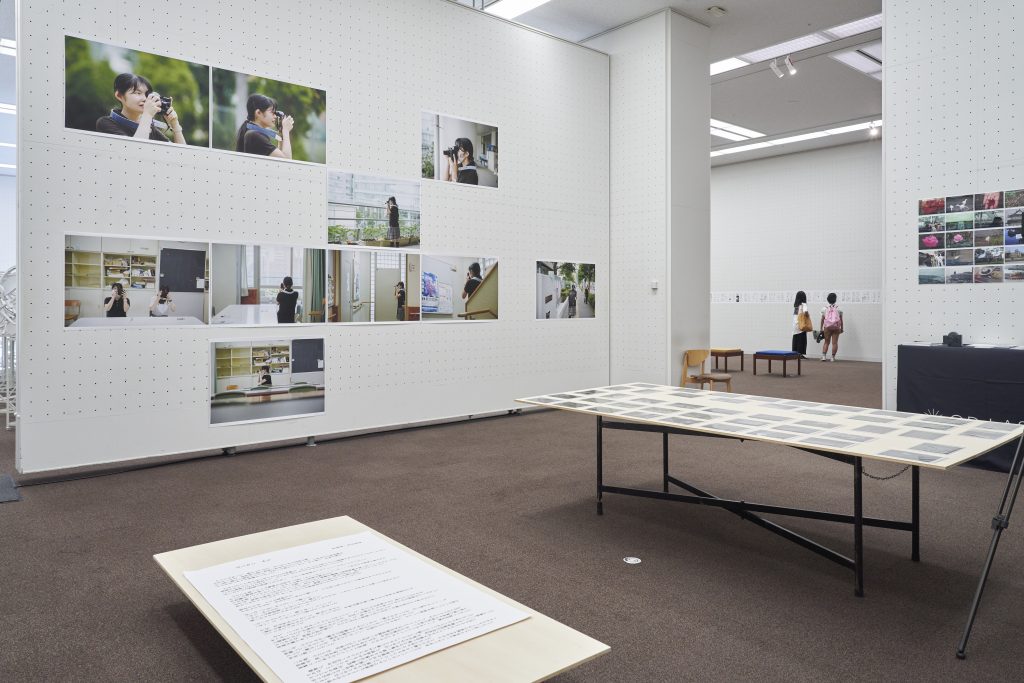
Photo courtesy of Arts Council Tokyo
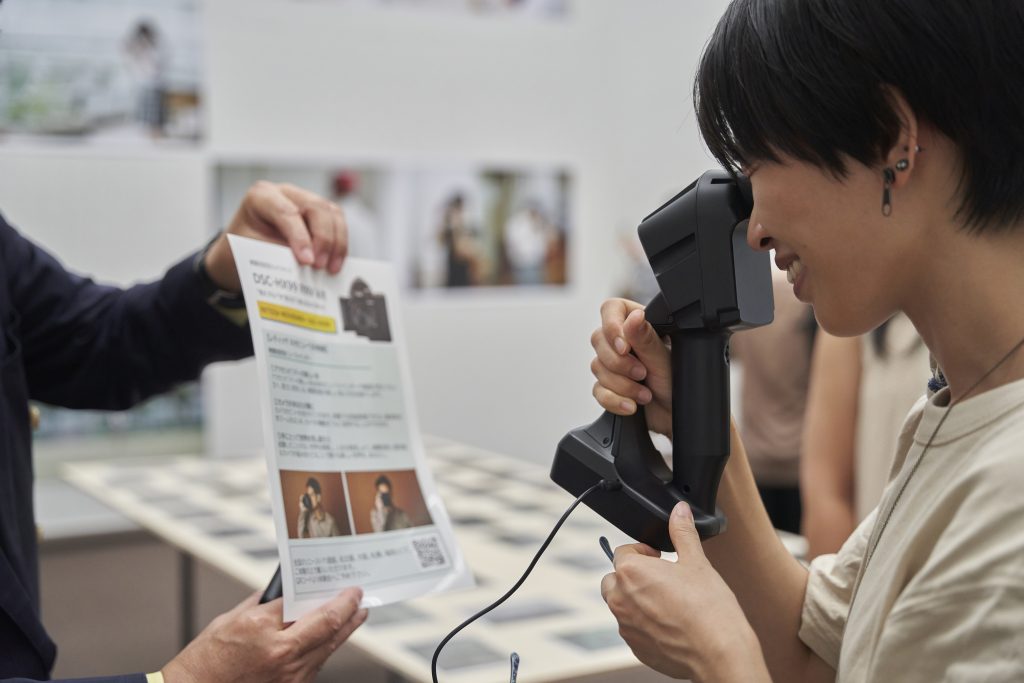
Photo courtesy of Arts Council Tokyo
The developer of these tools is QD Laser Inc., a spin-off venture from Fujitsu Laboratories Ltd. that succeeded in mass-producing “quantum dot lasers” (a type of nanotechnology) (*1). The impetus was the planning of products using this technology.
“We initially had the technology and were experimenting with how it could be beneficial to society,” says Hironori Miyauchi, who is in charge of the visual information devices business.
Magnifying reader and digital camera using laser technology
Initially, the company was developing a glasses-type product similar to “smart glasses.” At an exhibition where they displayed the product, someone with low vision–a condition where visual impairment causes some difficulties in daily life–said, “I can see when I use this.” This feedback inspired the company to create products specifically for people with visual impairments (*2).
In refining the product, the glasses required adjustments for field of view and fitting, which limited their versatility. Therefore, the company increased the screen size and transformed it into a handheld device rather than a wearable one, resulting in the RETISSA ON HAND. Although it looks like a microscope, looking through the lens projects the image directly onto the retina, enabling users to see regardless of their vision or field of view. This device’s unique feature includes the ability to magnify small text or distant objects.
“The eye adjusts focus by refracting light through the lens, projecting images onto the retina. In contrast, laser retinal projection technology passes a weak laser beam straight through the center of the pupil without using the eye’s focus adjustment, projecting directly onto the retina. This scanning technique creates an afterimage that appears as a visual image. It works similarly to a cathode-ray tube (CRT) television.”
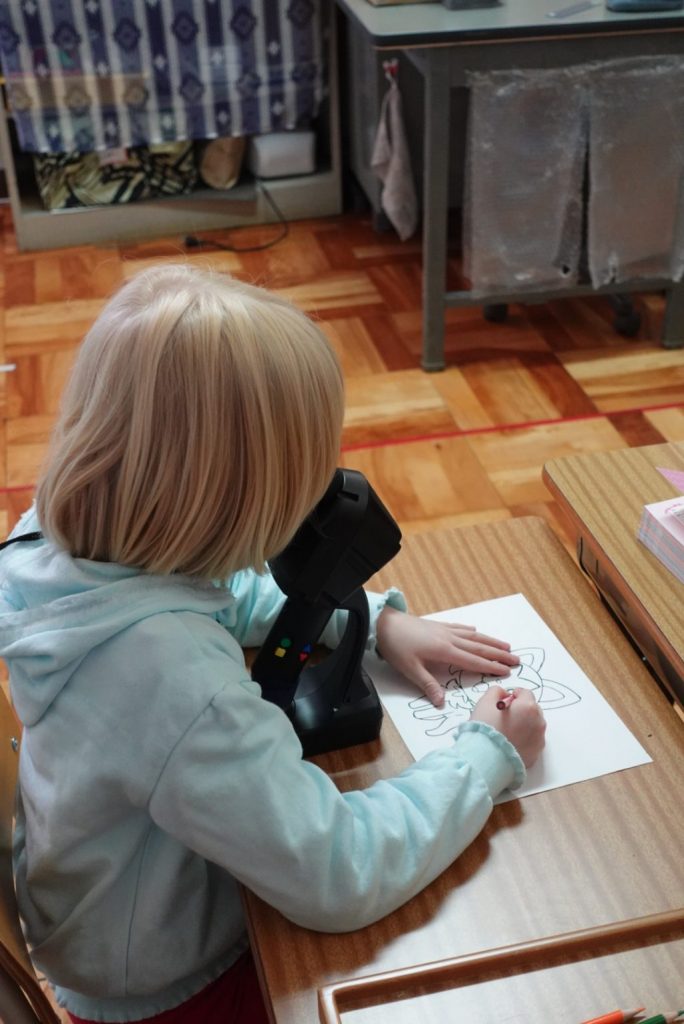
Adding positive value instead of eliminating negatives
This technology was developed into the product as the retinal projection viewfinder RETISSA NEOVIEWER and was integrated with Sony’s digital camera, resulting in the DSC-HX99 RNV kit, the camera kit used by the high school students mentioned earlier.
“While we were getting help from people with low vision to test the camera kit, we heard comments like, ‘Actually, there aren’t many things I struggle with.’ They mentioned, ‘For us, a world that’s hard to see is normal.’ This made us realize that simply making the world easier to see wasn’t enough; we need to add positive value,” Mr. Miyauchi explains.
Feedback from customers who purchased the camera kit included comments such as, “I bought this camera and went to the zoo with my children to take pictures,” and “Having this camera has made taking walks more enjoyable.” Mr. Miyauchi adds, “The added value of the experience of taking pictures may also be creating enjoyment in going out.” Additionally, after donating a prototype of the camera kit to a school for the blind, a photography club was established.
The RETISSA ON HAND is already being used in some libraries. There are also plans to introduce it in facilities like art museums in Tokyo. “Our goals are to make it smaller and lighter and to enhance energy efficiency for longer use,” says Mr. Miyauchi. In 2019, the Reading Barrier-Free Act was enacted with the aim that everyone can experience the culture of reading. This law has led to the spread of efforts to introduce magnifying readers and reading devices in libraries. With advanced technology from companies like QD Laser Inc., the barriers to “reading books” are expected to decrease further. Moreover, the introduction of such technology in museums, as well as in aquariums and zoos, may increase opportunities for people who have been distant from enjoying exhibits and facility visits.
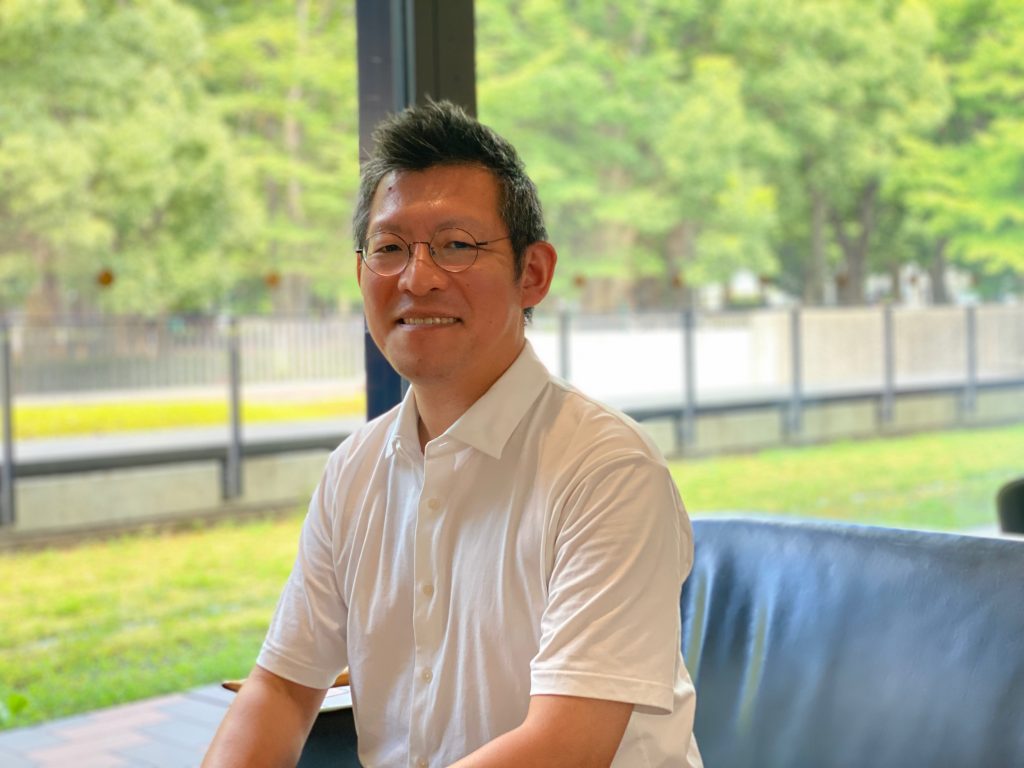
Text: Emi Sato
Translation: Kae Shigeno
*1 Quantum dot lasers are lasers equipped with quantum dots (very small special semiconductor structures with a diameter of 2 to 10 nanometers).
*2 RETISSA ON HAND and RETISSA NEOVIEWER are not medical devices and are not intended for the treatment or assistance of specific diseases or vision correction. There are individual differences in vision abilities. Depending on the affected area and the severity of impairment, recognizing images may be challenging (for example, if the function of the entire retina is impaired).
Introduction to facilities in Tokyo
At the Tokyo Metropolitan Teien Art Museum, a trial introduction of the RETISSA ON HAND has been conducted in the Welcome Room on the first floor of its main building since March 2024. Those interested can use it free of charge while viewing materials in the Welcome Room.
Creative Well-being Tokyo Summer Session 2023
Period: Saturday, July 29-Sunday, August 6, 2023
Venue: Auditorium at the Tokyo Metropolitan Art Museum, Citizens Gallery 4 on the museum’s lobby floor
Organizers: Tokyo Metropolitan Government, Arts Council Tokyo
Reports of the talk sessions, lectures, and workshops held during the event are available on archives page of the special website. Please take a look.
https://creativewell.rekibun.or.jp/activity/detail/summersession2023/ (in Japanese)
https://creativewell-session.jp/ (in Japanese)


